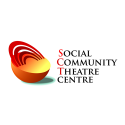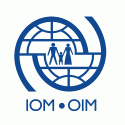





The SCT intervention in South Sudan, which took place in close collaboration with the Department of Mental Health and Psychosocial Support of IOM, involved part of the inhabitants and local staff of Bentiu, one of the most populated refugee camps in the world. The intervention had a twofold goal: to support the local staff training and to launch SCT activities with the target population in order to develop the main life skills.
TSC in South Sudan
May – July 2017
SCT intervention in South Sudan took place in close collaboration with the Department of Mental Health and Psychosocial Support (MHPSS) of IOM in Bentiu’s PoC, that with its 110,000 inhabitants is one of the most populated refugee camps in the world. The intervention had a twofold goal: to support the local staff training and to launch SCT activities with the target population in order to develop the main life skills.
Activities
The project has been developed through three different actions:
- Context analysis and mapping of creative resources in the PoC;
- Identifying targets, designing the intervention and conducting TSC activities;
- design, organization and realization of the final event.
Description of activities
- Context analysis and creative resource mapping
April 28 – May 31, 2017: The two SCT Centre’s operators witnessed the presence of multiple activities within the PoC, both artistic and in support of vulnerable categories. These activities are carried on by animators and facilitators chosen, according to their previous competencies, among the refugees living in the camp. These constitute the Mobile Staff of IOM.
The critical points were mainly the lack of new incentive to increase the paths of each activity and the lack of interconnections between the 5 sectors that divide the refugee camp.
- Identifying targets, designing the intervention and conducting TSC activities
After the mapping phase was completed, it was the turn of the intervention design.
Target Groups:
- Members of the Mobile Staff of the IOM MHPSS Department – sector supervisors, facilitators, animators;
- Young people between 15 and 25 years old, possibly not yet involved in the activities promoted by the IOM MHPSS department.
The intervention was organized according to different formats, chosen according to the characteristics and needs of the different users.
- a) Training directed at Mobile Staff.
Objective: Increase of some of the ten life skills indicated by the OMS as the core of cognitive, emotional and relational skills, whose mastery enables people to effectively address the challenges of everyday life.
The activities involved 40 beneficiaries.
- b) Workshop aimed at young people.
Objectives: building the group; fun and well-being; work on the theme of the water cycle – where nothing is created and nothing is destroyed, but everything is transformed – as a metaphor through which to make a shared analysis of the need to accept the great life-changing traumas as an occasion of growth and exploration of their resources.
With respect to the original design, working time was almost halved due to internal disorder in the camp: not all the expected meeting were organized and the topic of the water cycle could not be introduced and developed.
The three achieved meetings allowed the two operators to work on the construction of the group’s bond and the acquisition of the first expressive tools of theatrical language.
- c) Open-lab circus always aimed at young people, played open-air.
Objective: To intercept new users not yet involved in the activities of the IOM MHPSS department.
A semi-structured format that is not addressed to a specific group of people, but it is open to everyone, gave the possibility to involve anyone who is attracted by the activity. The social circus approach, based on the extraordinary use of the body and the development of psychomotor skills, proved to be particularly appealing to young people.
The open-lab circus course offered a path based on the use of two different disciplines: acrobatics and gyroscopic juggling.
Due to internal disorders in the refugee camp, it was possible to hold only one circus meeting that attracted a crowd of about 180 people. 10 boys between 16 and 20 years old participated in the lab, experimenting with the first basic figures of aerial dance.
- Design, organization and development of the final event
The objectives to be achieved with this latter action were:
- To give a restitution of the work done up to that time
- To strengthen the interchange of the 5 sectors of the refugee camp;
- To promote cooperation and collaboration processes among members of the community in the five sectors, including the staff of the IOM MHPSS department;
- To add value to the internal creative resources of PoC;
- To increase the sense of belonging to the community.
The chosen format was that of the Barat Parade, based on the mechanism of gift exchange and artistic counter-gift, operated with a relay system between the 5 sectors of the PoC.
The parade should have crossed the 5 areas of the camp, but because of security problems the route has been scaled down, allowing the participation of all the groups involved in the design phase. The event, whose construction was prepared by a hundred people, saw the participation of about a thousand beneficiaries.





